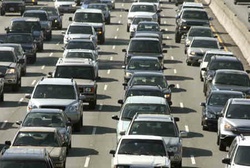What is Eco-Safe Driving?
Eco-Safe driving is a recognised and proven style of driving. It contributes to improved road safety by lowering accident rates while reducing fuel consumption and greenhouse gas emissions, (Eco-safe drivers can save up to 25 per cent on fuel consumption) . Not only does Eco-Safe driving offer some environmental protection it also reduces wear and tear on your vehicle and therefore maintenance and garage repair costs. Eco-Safe driving encourages a more relaxed and less stressful atmosphere in your car benefitting both drivers and passengers.
Eco safe driving has two main aims, to reduce the amount of CO2 emissions — saving fuel — and to improve road safety. The principles are simple and include looking ahead and anticipating more, as well as avoiding stopping unnecessarily.
If you're sitting a driving test, you’ll also be assessed on your ability to drive in a way that shows eco-safe driving techniques. This assessment is not part of the existing assessment criteria for the practical test and you will not fail your test because you don’t demonstrate eco-safe driving techniques. The driving examiner will assess control and planning, and at the end of the test will give you feedback, as guidance, on how efficiently you’re driving.
Control
Always try to use the vehicle controls as smoothly as possible, with particular attention to:
This reduces wear and tear on your vehicle and will help in reducing CO2.
Planning
Reduce harmful emissions by anticipating road traffic conditions and acting in good time, rather than reacting to them at the last moment, especially:
Tips for ‘eco-safe’ driving and riding
Follow these tips as a guide to safe driving or riding for economy:

Further information on eco-safe driving and riding is available in the leaflet ‘Eco-Safe Driving - a guide to safe driving/riding for economy’. This is handed to candidates at the end of their driving test or can be downloaded,by following this link, DSA Guide to Eco Safe Driving, (this Link opens in a new browser window).
